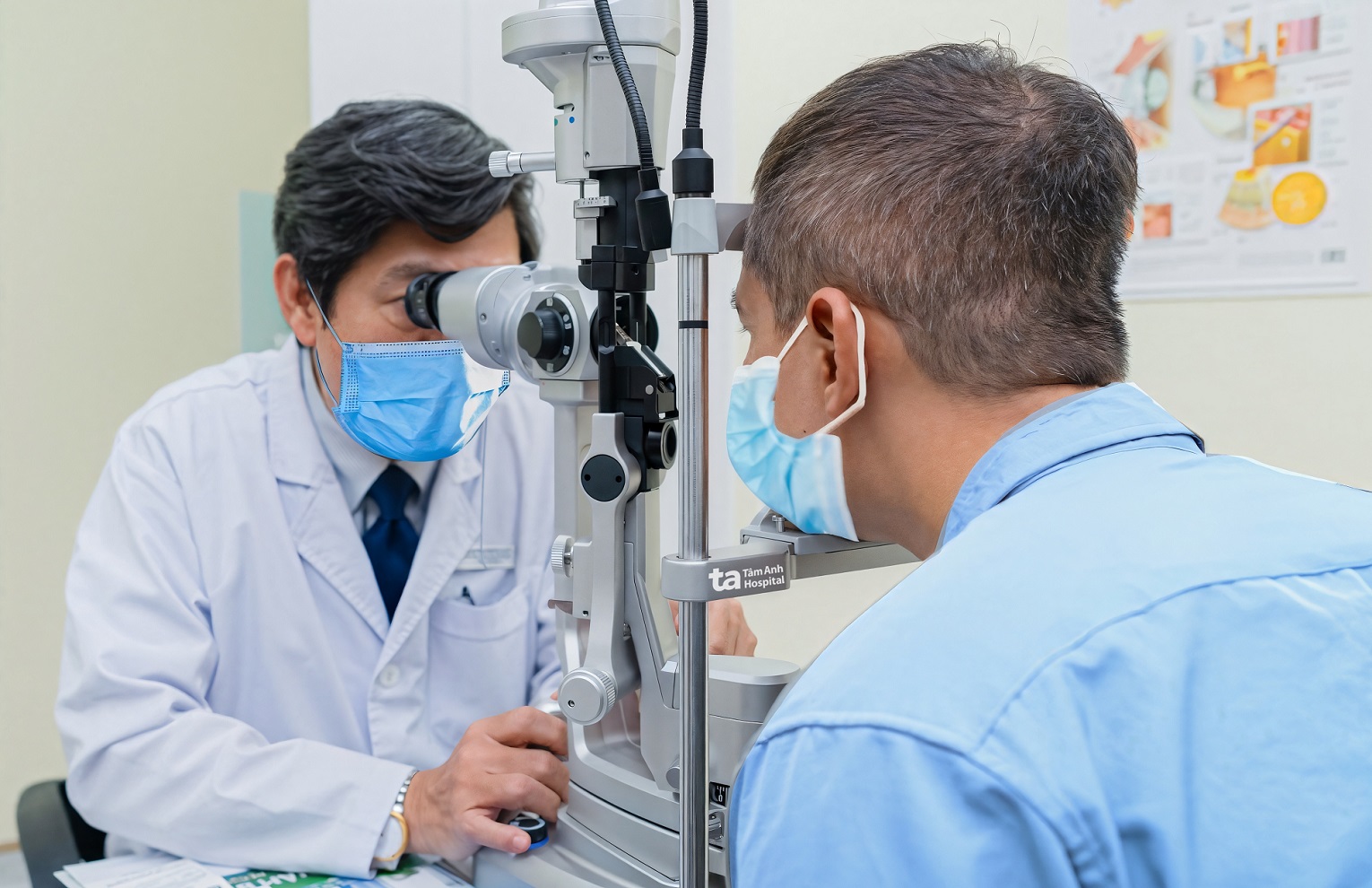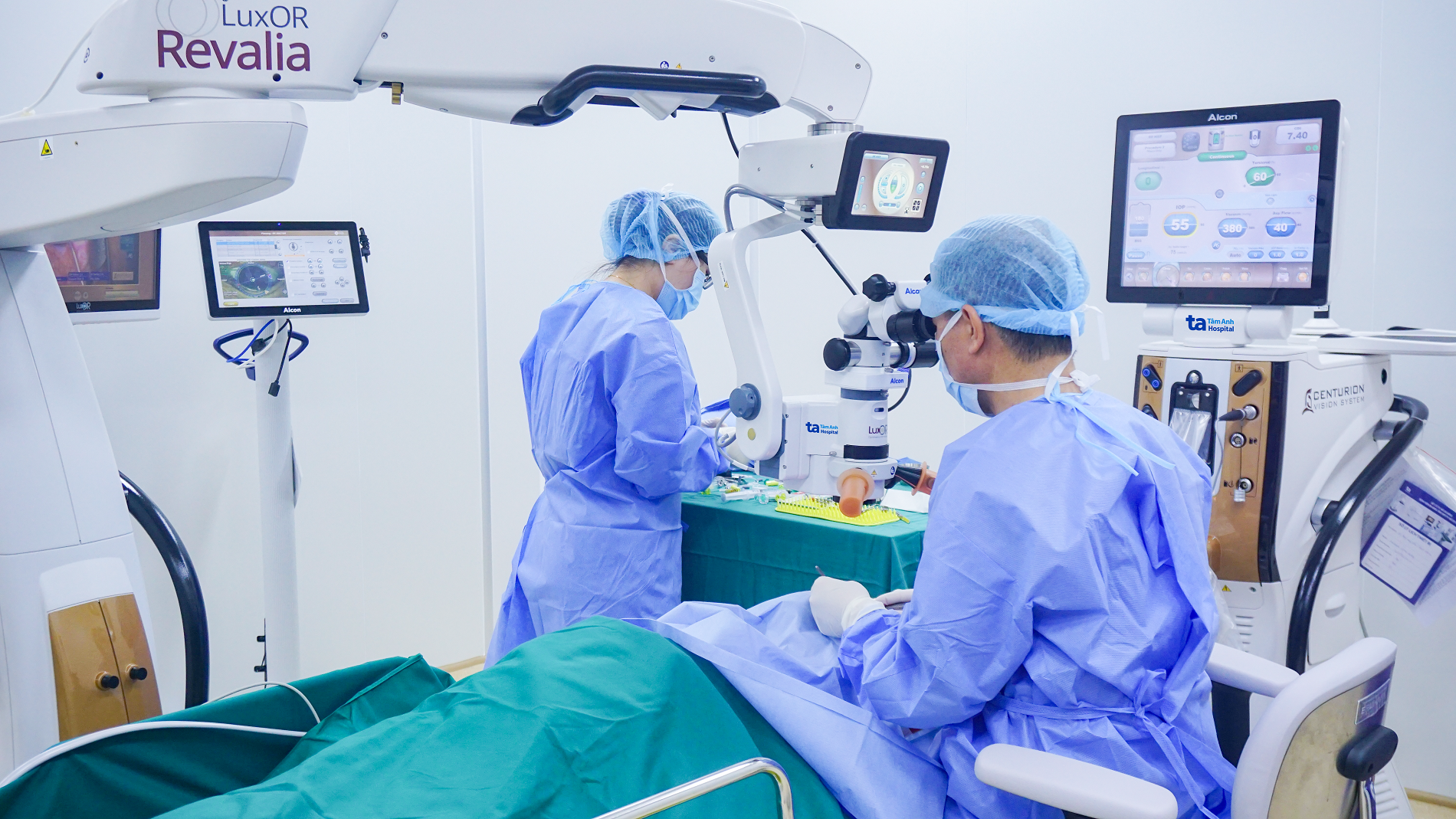Dr. Dinh Trung Nghia, deputy director of the High-Tech Eye Center at Tam Anh General Hospital in Ho Chi Minh City, reported that Mr. Hoang's right eye had 4/10 vision, while his left eye had decreased to 1/10 due to cataracts. Cataracts occur when the eye's natural lens becomes cloudy, reducing light transmission to the retina. They are a leading cause of vision impairment and blindness, particularly in older adults.
Dr. Nghia recommended cataract surgery for Mr. Hoang's right eye first. The left eye would be operated on about a month later, after the right eye had recovered and vision improved.
 |
Dr. Nghia examines Mr. Hoang's eyes. Photo: Tam Anh General Hospital |
Dr. Nghia examines Mr. Hoang's eyes. Photo: Tam Anh General Hospital
Before surgery, Mr. Hoang underwent a comprehensive eye exam and biometry to accurately measure parameters like axial length, corneal curvature, and lens thickness. These measurements are crucial for selecting the appropriate intraocular lens (IOL). He also had his eye pressure checked to screen for glaucoma and underwent blood tests to check blood sugar levels and screen for diabetes or other underlying conditions. After being deemed fit for surgery, he was advised to have phacoemulsification, a minimally invasive procedure with a quick recovery time.
Professor Nguyen Xuan Hiep, director of the High-Tech Eye Center, made a small incision to access the inside of the eye. He then separated the lens from its surrounding capsule and used a specialized instrument to break it into small pieces. These fragments were suctioned out, and an artificial lens (IOL) was implanted. The tiny incision requires no stitches, shortening recovery time and ensuring good postoperative vision. The procedure took 5-7 minutes, was painless, and involved no blood loss.
 |
Professor Xuan Hiep (right) treats Mr. Hoang. Photo: Tam Anh General Hospital |
Professor Xuan Hiep (right) treats Mr. Hoang. Photo: Tam Anh General Hospital
At a follow-up appointment a week later, Mr. Hoang's right eye vision had improved to 10/10. He reported clearer vision and no more glare or blurriness.
According to the Ministry of Health, Vietnam has about 2 million blind people, with cataracts being a common cause. Cataracts develop gradually, often with no noticeable symptoms initially. As they progress, blurred vision, eye strain, and gradual vision loss occur—the earliest and most significant signs. Dr. Nghia noted that cataracts are becoming more common in younger people due to factors like diabetes, prolonged steroid use, and eye injuries. Prompt examination and surgery can help preserve vision.
For a month after surgery, patients should avoid wind, dust, smoke, and water. They can watch TV, use their phones, or work on computers for short periods, and should wear protective glasses in potentially hazardous environments. No dietary restrictions are necessary unless the patient has underlying conditions requiring specific instructions. After a month, most activities can resume normally.
Duc Tri
*The patient's name has been changed.
| Readers can submit questions about eye diseases here for doctors to answer. |












